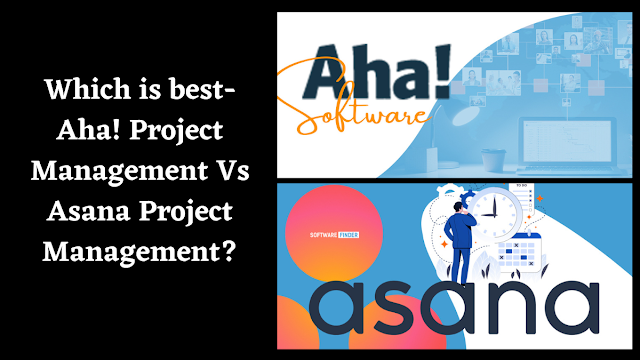Which is best-Aha! Project Management Vs Asana Project Management?
If you are wondering how Aha! and Flow project management systems compare, read this article to find out what they have in common. Flow project management is all about the flow and spontaneity of the work that you do, whereas Aha project management allows you to focus on the details of your work. You can use whichever tool you find most convenient for your work style. There are also several other notable differences between the two systems, which you will discover in this comparison article.
Asana
If you're in the market
for the best project management software, then it's important to know how each one
works. Asana is an intuitive platform with easy-to-use features, but there are
also some important differences between the two. For instance, Asana allows you
to set delivery deadlines, create multiple workspaces, assign team members to
different projects, and manage team discussions. In addition, both programs
integrate with email apps and third-party messaging tools.
While Asana's
time-tracking feature is useful, it is less helpful for managing a large number
of tasks. With Flow, you can simply add project details, files, and reminders
to each task. You can even set task dependencies to track progress, and Asana
can also keep track of the status of individual tasks. Both tools also allow
you to add notes and assign tasks to team members.
Aha!
To compare Aha! project
management vs Asana project management, you'll need to consider how each works.
Both software tools are effective at helping teams organize and track projects,
and Aha! has the advantage of being integrated with social media. The two apps
also offer their own unique features, including bi-directional integration.
Asana is the preferred option for software managers, while Aha! is preferred by
11 percent of developers and 14 percent of companies.
The two tools are similar
in most respects, with each offering a similar set of features and
functionality. For example, both offer a calendar view of project activities,
and both let you link tasks to specific stages. The programs also allow you to
customize data and maps, assign tasks, and link custom fields. Asana also
offers cross-functional features such as product information import and task
assignment, while Aha doesn't.
Asana project management
There are many benefits
to using Asana for your project management needs, and you may find it useful to
use it for your team's collaboration. It is easy to manage discussions and
tasks within the project and integrates well with other tools like email and
Slack. But Asana does not have built-in chat messaging, and it requires a
significant learning curve. Asana
project management does have a few limitations, though, including the
inability to create subtasks.
For a small business or a
team, Asana's Timeline is a powerful tool that simplifies project management.
It shows the timeline of each task, their deadline, and their dependencies.
Because Asana is an online application, it helps you manage your team's
workflow and avoid conflict. You can also set dependencies between tasks and
keep track of their progress. Flow offers a simple interface, but is not as
powerful as Asana.
Aha! project management
Aha! and Asana is
similar, but each has distinct strengths and weaknesses. Asana's bi-directional
integration adds several functionalities to the project management platform.
For example, you can map Asana tasks and custom fields from Aha! to Asana. You
can also specify which direction changes are sent. Asana also lets you create
features and map them to custom fields in Aha!
The features and
capabilities of each software package vary based on the needs of different
companies. Take the time to compare the terms and costs of both, as well as the
overall effectiveness and user feedback. While both systems work well for some
projects, they have different strengths and weaknesses that make them perfect
for a particular project. Several entrepreneurs find these systems helpful for
managing projects, but you should weigh your options carefully before deciding
which to use.
Conclusion
While Aha! project
management may be ideal for agile workflows and Kanban boards, it is not specifically designed for project management. It is best suited for long-term
planning and strategic planning. Both platforms integrate with other tools and
can be hard to manage afterward. The main difference between the two
applications is the functionality. Aha! has a better collaboration tool than
Asana, but as with any other project management platform, you should be sure
that you are fully able to manage your projects.




Comments
Post a Comment